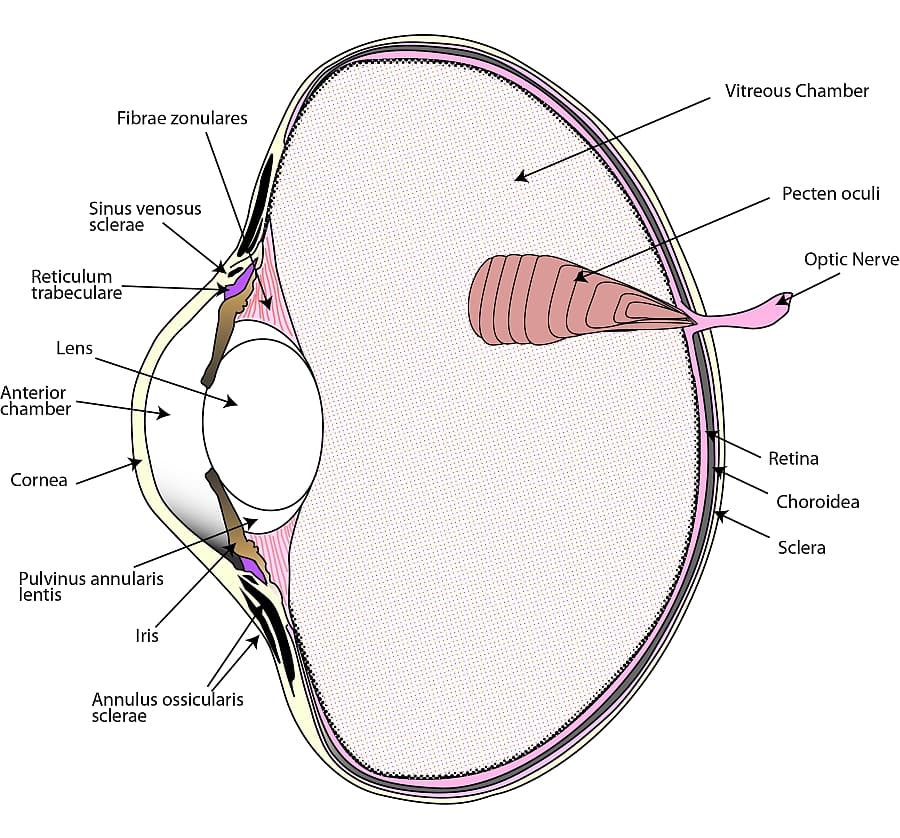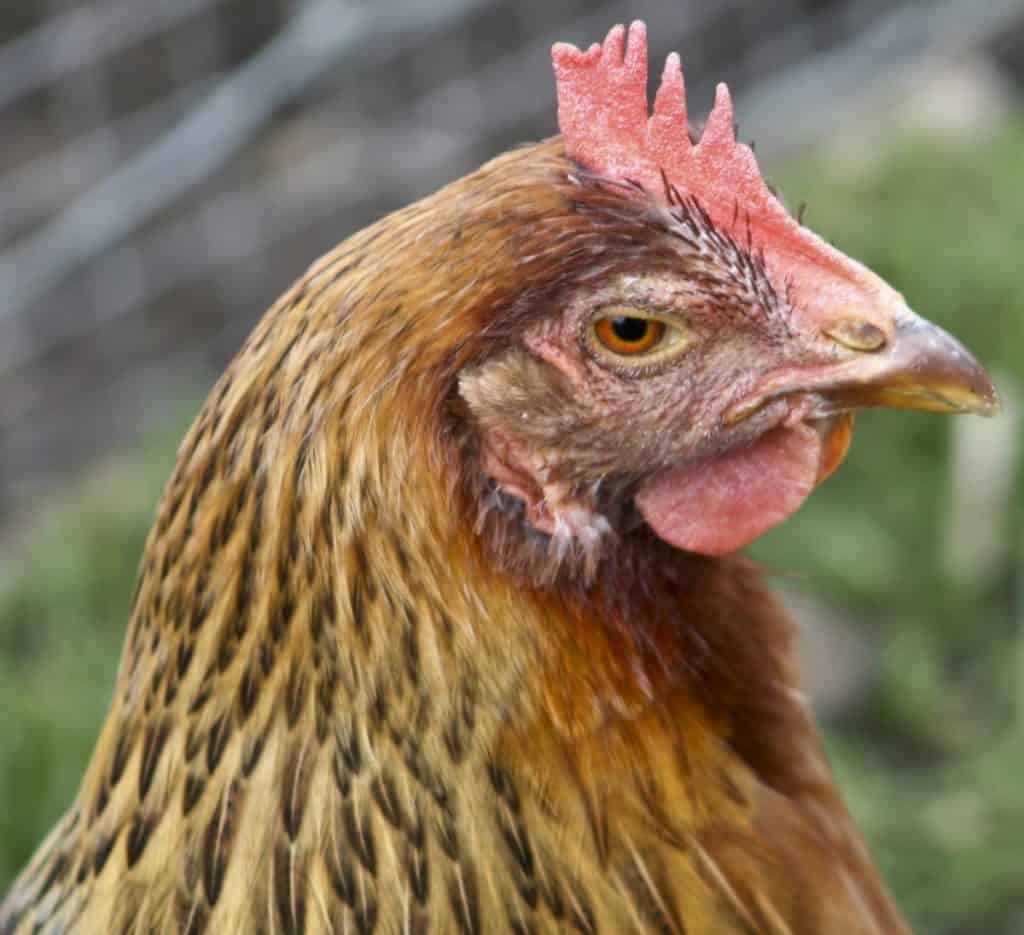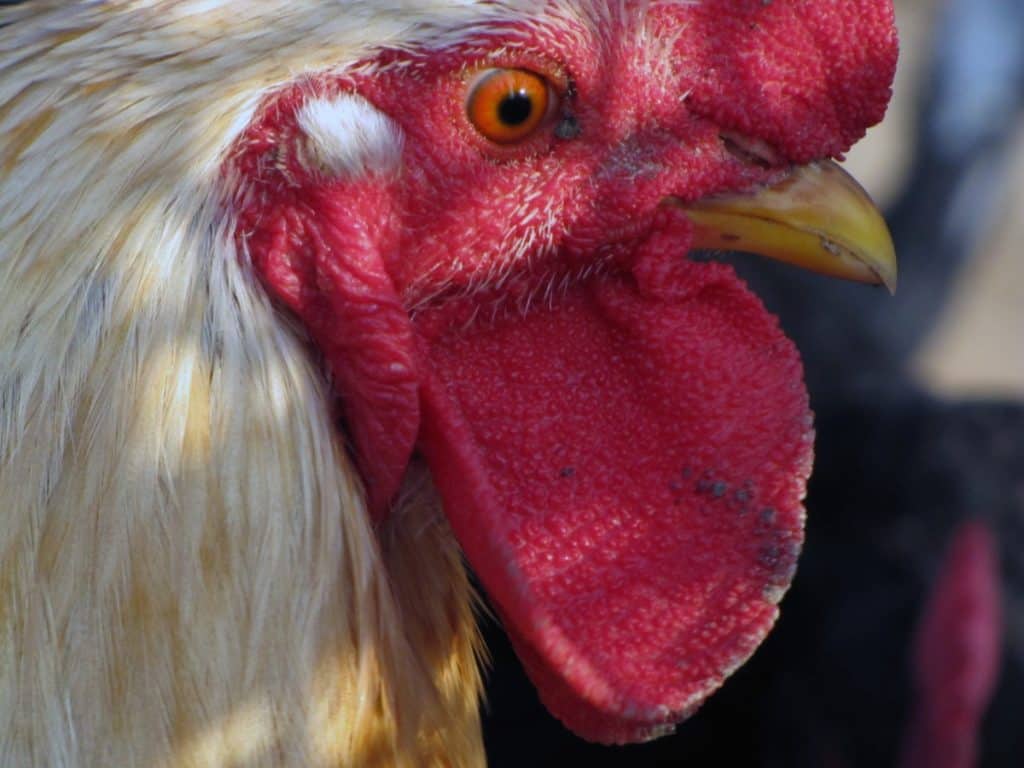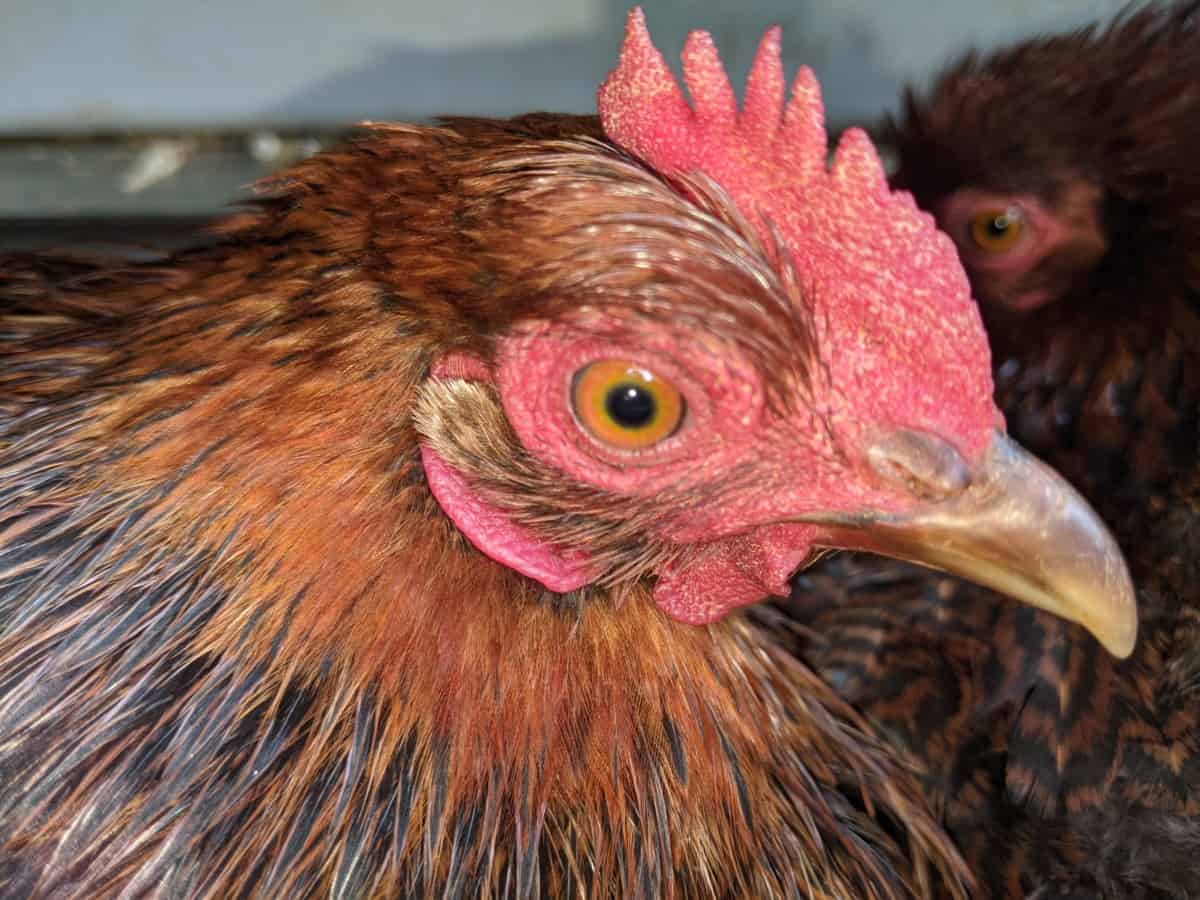Have you ever wondered why a chicken moves its head so swiftly and vigorously from side to side? They look almost as if they have trouble seeing and therefore have to move their heads like that for them to see the way we can by just looking in front of us. They look paranoid and skittish, and it makes you wonder; how do chickens see?
A chicken’s eyes are situated in the sides of its head, which means that they can see an incredible 300 degrees all around them. They can even see small light fluctuations that are imperceptible to the human eye, and their pineal gland enables them to sense the absence or presence of light.
These fantastic creatures can use each eye independently, at the same time. Their eyes take up 10% of their entire head and have a double-cone structure that helps them track movements. They are also tetra-chromatic, meaning they have four cones that allow them to see green, red, blue, and ultraviolet light.

Do Chickens Have The Same Eyesight As Humans?
They see the same way that we do by light entering through the iris and cornea, stimulating the nerve endings in the retina, situated at the back of the eye. The difference is that humans have a trichromatic vision, and we only have three wavelengths; green, red, and blue.
Chickens have a tetra-chromatic vision and four wavelengths; green, red, blue, and ultraviolet light. They have colored filters mixed with their nerve cells, so their vision differs from ours. The layout of a chicken’s receptors is like intertwined mosaics.
Chickens can see colors even better than humans can. They have a much broader color spectrum than we do. A chicken’s eyes are so sensitive that they experience fluorescent light differently than other lights such as LED’s.
They have a nictating membrane, a third eyelid that slides horizontally over their eyes to protect it from debris and dust. Chickens have mono-vision, so their right eye is near-sighted, and their left eye is far-sighted. Chickens evolved from dinosaurs; therefore, they have terrible night vision.
Chickens see things much different from how we see them due to the extra sector of the light spectrum they can see. They also have excellent motion-sensing abilities. Therefore, installing artificial light in their coop that flickers off and on annoys them to the point where they start to bully each other.
Chickens, like many other birds, have a fovea in their retinas. This is a tiny pit that enlarges the images they see. They have two foveae, one for close up and one for distant vision.
So, if you ever wondered why they tilt and bob their heads sideways when you approach them, it is because they are using their close-up fovea, which is sideways and oval-shaped. Chickens don’t realize the rest of the flock until they are in a close range of +/-24 inches (60.96cm).

Do Chicks Have Good Eyesight?
Chickens have good eyesight from very early on in their lives. A chick can avoid obstacles, see movement, and peck directly at an object—their sensitivity to spatial detail peaks within 48 hours after they have hatched. A chick’s eyesight is much more advanced than a human baby, a monkey, and even a kitten.
Chickens use their light vision to determine what time of the day it is and their color vision to detect insects and bugs. They are highly aware of predators approaching due to their extraordinary sensing ability, making them a lot less vulnerable than you thought.
Hens are incredibly protective over their young and use their fantastic detection skills to ensure everything is safe for their chicks.
A hen uses her color vision to detect which chicks are the healthiest in the batch. When she sees that they have shiny feathers by using her wavelengths of ultraviolet light, they are healthy.
Can Chickens Develop Eye Problems?
An average chicken can see the tiniest seeds, mites, and bugs during the day, but as the sun sets, so does their vision. Chickens do experience various eye problems. Some are caused due to injury from roosters jabbing one another with their sharp spurs. They also peck at each other and usually damage their opponents’ eyes in the process.
The strange thing about chickens is that if one of them is injured, the rest of the flock will start pecking at the injured area, leading to blindness and sometimes death.
The infections caused by injury can result in diseases and infections such as;
- Dullness of the eyes
- A yellow plaque beneath the eyelids
- Cataracts
- Conjunctivitis
- Tumors
- Eyes that are inflamed
- Discharge
- Lesions
Avian pox is a viral infection that causes blistery lesions around the chicken’s eyes, causing them to swell and potentially leading to blindness or severe sight impairment.
Another severe disease is Marek’s Disease, a form of the herpes virus and results in cancer, blindness, infection of major organs, and tumors that grow on the chicken’s iris.
It is essential to have an antibiotic ointment available at all times should an injury to the chicken’s eye occur. This cream prevents infection and could potentially heal the eye completely, giving the severity of the injury, in which case you should consider consulting an avian vet for further advice.
There is not much chance of survival for a chicken when it loses its sight. Eating, roosting, and drinking water becomes an impossible task, and more often than not, the bird will succumb to its eye injury.

In Conclusion
Apart from having night-blindness, chickens have perfect eyes. They see in a much more comprehensive range than people do, due to their eyes on the side of their head, instead of in the front.
Now you know that when your chickens are walking about, bobbing their heads, they are not crazy. They are doing it with purpose. Mother nature is impressive, and studying the eyesight of a chicken proves precisely that.
So, remember to look for any signs of eye disease or injury so that you can reverse the damage before your chickens lose their amazing eyesight.

